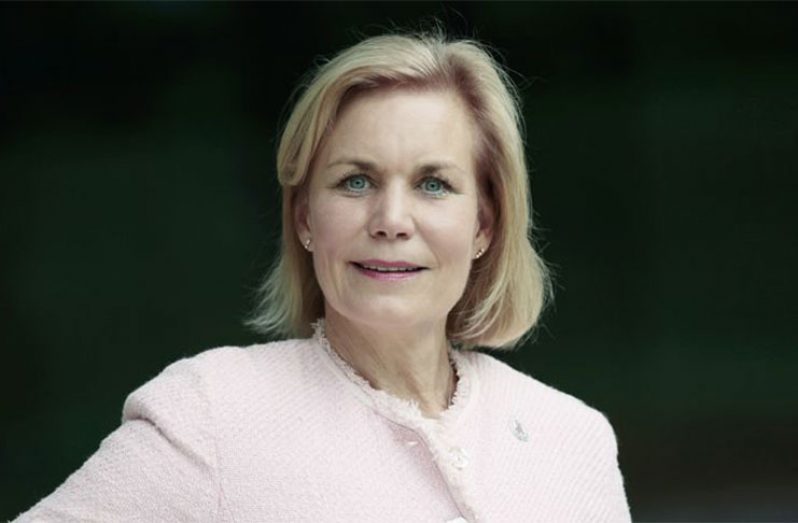…says resources fallen by nearly US$1B
THE Joint United Nations Programme on HIV/AIDS (UNAIDS) is calling on countries globally to reinvigorate the urgency towards collective 2020 HIV targets as global gains have slowed, and available resources for HIV have fallen by nearly US$1B.
In a release on Tuesday, the UNAIDS indicated that while impressive advances have been made in some countries, there have been “troubling failures” in others. These failures include rises in new HIV infections and AIDS-related deaths, which have been documented in the UNAIDS’ Global AIDS Update, ‘Communities at the Centre’.
The report shows that key populations and their sexual partners now account for more than 54 per cent of new HIV infections globally. It states that in 2018, key populations — including people who inject drugs; gay men and other men who have sex with men; transgender people; sex workers and prisoners — accounted for around 95 per cent of new HIV infections in eastern Europe and central Asia, and in the Middle East and North Africa.
However, the report also shows that less than 50 per cent of key populations were reached with combination HIV prevention services in more than half of the countries that reported. “We urgently need increased political leadership to end AIDS,” UNAIDS Executive Director, Gunilla Carlsson said, adding: “This starts with investing adequately and smartly, and by looking at what’s making some countries so successful. Ending AIDS is possible if we focus on people; not diseases, create road maps for the people and locations being left behind, and take a human rights-based approach to reaching people most affected by HIV.”
OTHER DATA
Other data in the report indicate that globally, around 1.7M people became newly infected with HIV in 2018, a 16 per cent decline since 2010, driven primarily by steady progress across most of eastern and southern Africa.
However, there is still a long way to go in eastern and southern Africa, the region most affected by HIV, while there have been worrying increases in new HIV infections in eastern Europe and central Asia, at 29 per cent; in the Middle East and North Africa at 10 per cent; and in Latin America at 7 per cent. The report shows, too, that the gap between resource needs and resource availability is widening, as donors have been disbursing less, and domestic investments did not grow fast enough to compensate for inflation.
Meanwhile, Some 79 per cent of people living with HIV knew their HIV status in 2018; 78 per cent who knew their status were accessing treatment, and 86 per cent of people living with HIV who were accessing treatment were virally suppressed, keeping them alive and well, and preventing transmission of the virus.
As such, AIDS-related deaths continue to decline, as access to treatment continues to expand, and more progress is made in improving the delivery of HIV/tuberculosis services. Around 82 per cent of pregnant women living with HIV now have access to antiretroviral medicines, an increase of more than 90 per cent since 2010, which has resulted in a 41 per cent reduction in new HIV infections among children.
The estimated 940,000 children aged 0–14 years living with HIV globally on antiretroviral therapy in 2018 is almost double the number on treatment in 2010, but this still falls short of the 2018 target of 1.6 million.
LARGE DISPARITIES
Although large disparities still exist between young women and young men, there has been success in reducing new HIV infections among young women. Globally, new HIV infections among young women aged 15–24 years were reduced by 25 per cent between 2010 and 2018, compared to a 10 per cent reduction among older women aged 25 years and older.
According to ‘Communities at the Centre’, gains have been made against HIV-related stigma and discrimination in many countries, but discriminatory attitudes towards people living with HIV remain extremely high.
Since 2010, AIDS-related deaths have fallen by 33 per cent to 770 000 in 2018. Just this week in Guyana, the Alpha and Omega Community Health Associates Incorporated was granted G$37. 8M to fight HIV/AIDS as part of the government’s response to strengthen the national response.
Meanwhile, late last year, the Ministry of Public Health, through the National AIDS Programme Secretariat (NAPS) stated that Guyana is closer today to meeting its UNAIDS 90–90–90 target.
It reported that 86 per cent of all people living with HIV in Guyana now know their status; that 74 per cent of those diagnosed are receiving sustained antiretroviral therapy (ART); while 65 per cent of those on ART have achieved viral suppression. Even so, the UNAIDS urges countries to “live up to the commitment made in the 2016 United Nations Political Declaration on Ending AIDS,” and to invest in building the capacity of civil society organisations to deliver non-discriminatory, human rights-based, people-centred HIV prevention and treatment services in the communities most affected by HIV.



.jpg)








